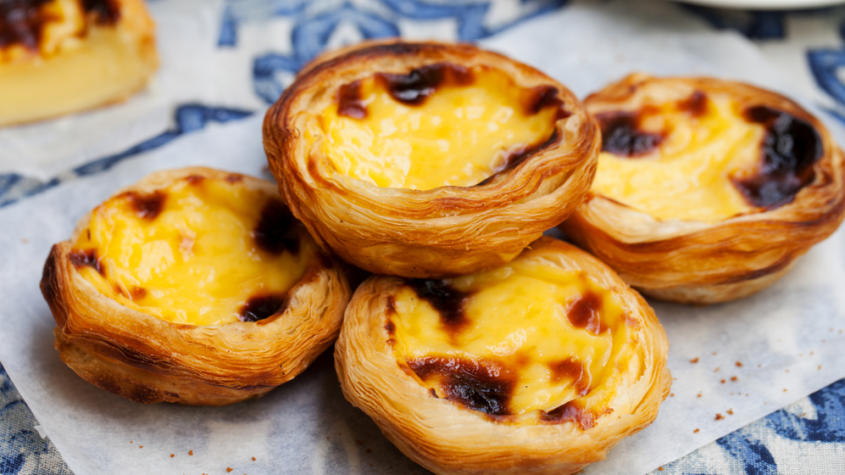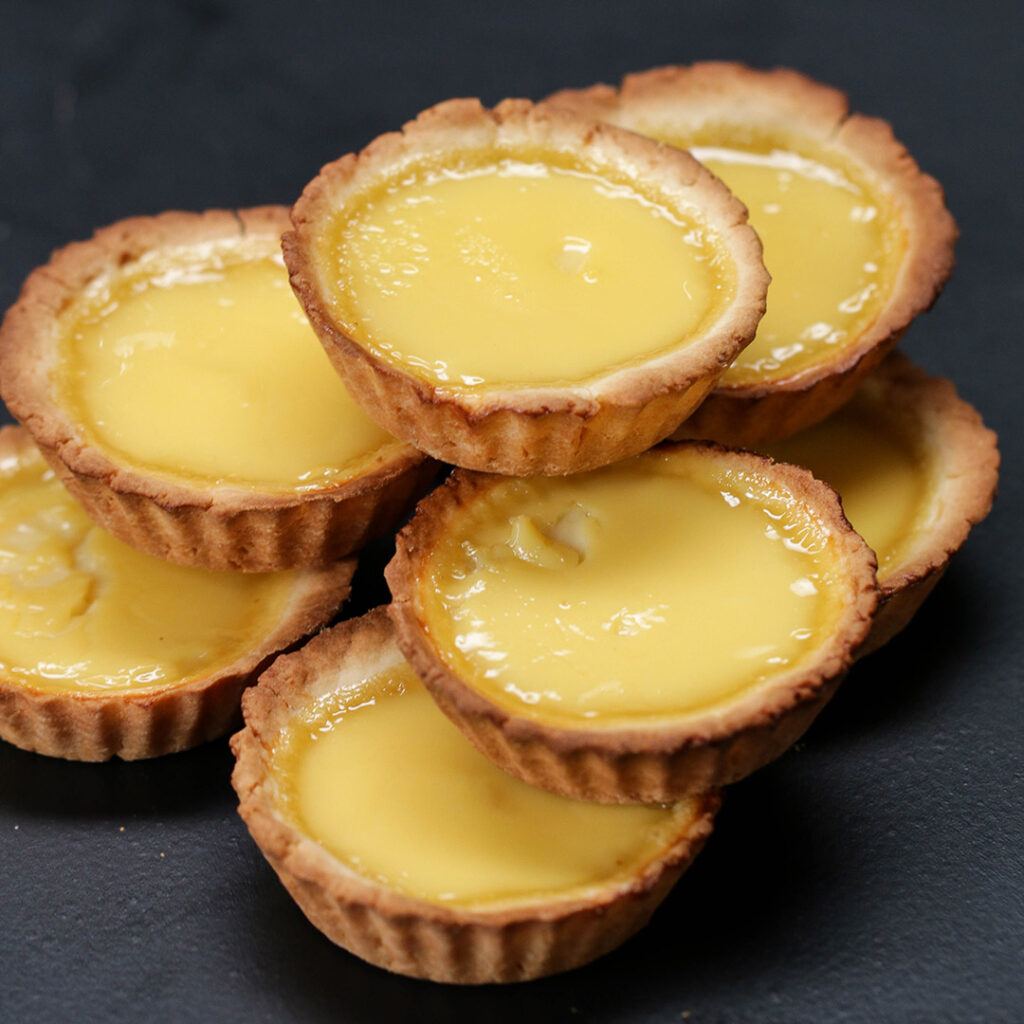The distance between Lisbon and Macau is about eleven thousand kilometers. The two cities are worlds away, and yet are connected by a shared beloved treat- the egg tart. So how did this pastry travel that distance?
Historically, Catholic convents and monasteries in Lisbon would use vast quantities of egg whites to starch their clothing, notably the stiff white habit that Catholic nuns wear. Not wanting to waste all the leftover yolks, the religious cloisters would bake cakes and pastries, including the pastéis (pastel) de nata, the Portuguese egg tart.
The Liberal Revolution of 1820 threatened the dissolution of these religious orders, and some of them turned to selling pastéis de nata to the local communities to bring in some revenue. They exploded in popularity and the Jeronimos Monastery is a World Heritage Site today.


As the Portuguese colonized Macau in the 19th and 20th centuries, they introduced not only Christianity but also their iconic egg tarts. These egg tarts have spread in popularity and are a culinary staple in southeastern China today.